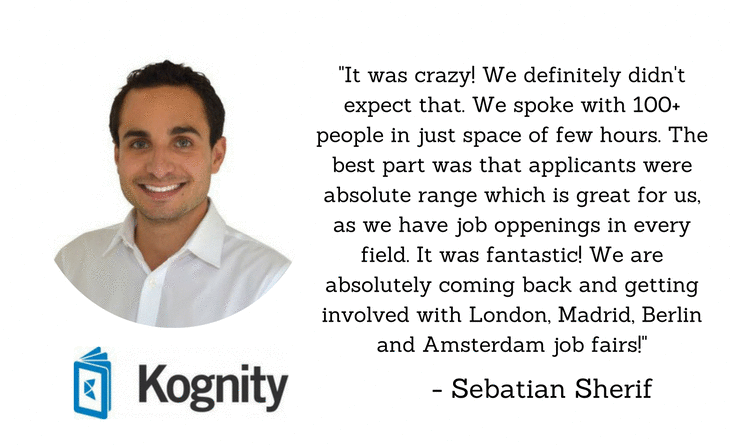In the world of talent acquisition, the journey from job-seeker to employee is a multi-dimensional roadmap, requiring careful navigation. The linchpin holding these facets together? The recruiter. Recruiters play an instrumental role, acting as guides who bridge the gap between candidates and organizations. As job-seekers traverse through uncharted career paths, it is the recruiter who provides the necessary direction and support.
This blog post illuminates the critical role a recruiter plays in a candidate’s journey—a journey that begins with candidate awareness, plots its course through resume screenings and interviews, and finally reaches its destination at the onboarding process and successful assimilation into a new role. However, navigating this roadmap isn’t without its share of challenges or problem areas.
Join us as we delve into ten such areas and highlight feasible solutions. We will detail each stage, examine potential hurdles recruiters might face, and offer pragmatic strategies to overcome these obstacles. Whether you’re a seasoned recruiter hoping to improve your process or a new hire seeking to understand the complexities of the hiring landscape, this blog will provide valuable insights into the intricate world of recruitment.
1. Candidate Awareness:

Recruiters can overcome this challenge by leveraging various marketing strategies such as social media campaigns, SEO-optimized job listings, and networking events to increase familiarity with your company and job openings. Create impactful employer branding to highlight the company’s key features and work culture.
2. Effective Communication:
Recruiters can ensure effective communication by utilizing a mix of communication tools such as email, phone calls, and SMS to keep candidates updated. By setting clear expectations about the recruitment process and timelines, recruiters can keep candidates engaged and minimize confusion.
3. Job Description Clarity:

Recruiters should collaborate with hiring managers to draft precise job descriptions. Use clear, simple language to convey the main duties, expected outcomes, required skills, and qualifications. Be sure to highlight any unique or attractive aspects of the role, such as remote work opportunities or professional development support.
4. Resume Screening:
Applicant Tracking Systems (ATS) can automate part of the screening process by checking for keywords and qualifications. AI-powered screening tools can support recruiters in managing high volumes of applications and improving the efficiency of the initial screening process.
5. Skills Matching:
Recruiters can add assessment tools/tests as part of their selection process to directly evaluate the candidates’ skills specific to the role. Additionally, take advantage of LinkedIn or portfolio websites to get a better understanding of the candidate’s past work and skill sets prior to the interview.
6. Candidate Engagement:

Proactively communicate any changes or delays in the selection process. Provide constructive feedback to candidates; even if they do not get the job, they will appreciate the opportunity to learn and develop. Keep them engaged with your company even post-interview, it will reflect positively on your organization’s image.
7. Interview Scheduling:
Implement tech tools for scheduling interviews. Platforms like Calendly, Doodle can make scheduling hassle-free by allowing candidates to pick their own interview slot within predefined windows.
8. Feedback Collection:
Anonymous surveys can help gather candid feedback. Provide a safe space for candidates to express their honest opinions and ensure to respect their privacy when they do so. Use this constructive criticism to continually improve your recruitment process.
9. Job Offer:
Be flexible and open in your negotiation. Understand the candidate’s expectations and speak about the complete compensation package including benefits, flexible working, professional development, etc. Offering a competitive package can make your offer more attractive.
10. Onboarding Process:

Use digital onboarding software to streamline paperwork. Arrange meetings with key team members and provide new hires with the necessary training. Pair new hires with a ‘buddy’ or mentor for their initial few weeks to make them feel welcome and supported.
In conclusion, recruitment is a multifaceted process that requires strategic planning and efficient execution. The first hurdle is candidate awareness; ensuring that potential applicants are aware of the company and the open position is crucial. This can be achieved through effective promotion of the job opening.
Additionally, maintaining constant communication with candidates is essential. It prevents uncertainty and loss of potential employees due to lack of follow-ups or delayed responses.
Clear job descriptions are also important to avoid mismatched applications and unnecessary time spent on filtering these out. Similarly, efficiently screening resumes and matching skills to job requirements are critical elements of the recruitment process.
Yet, engaging the candidate throughout the process, from application to onboarding, is a challenging aspect. A drawn-out process can result in the candidate losing interest.
Scheduling interviews can also pose a logistic challenge, requiring coordination between various parties.
Feedback collection is crucial for improving the recruitment process. However, eliciting responses from candidates can sometimes be difficult.
The job offer stage, involving negotiation of salary, benefits, and other terms, can often be complex and requires astute handling.
Finally, ensuring a smooth onboarding process can significantly enhance employee satisfaction and reduce the time-to-productivity ratio.
Overall, by addressing these challenges effectively, companies can streamline their recruitment process, making it more efficient and successful.






